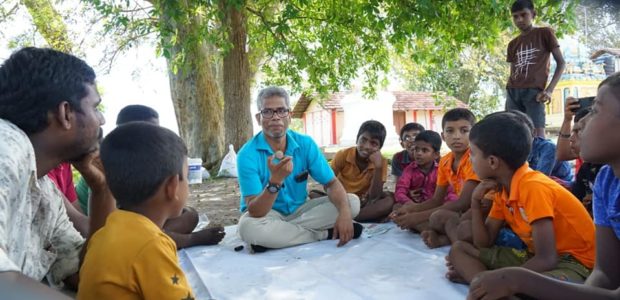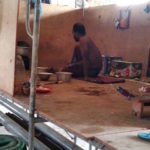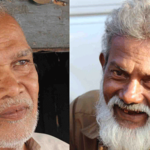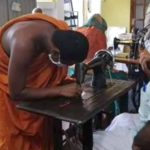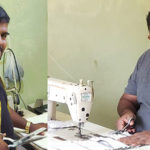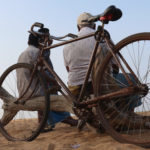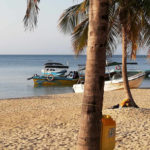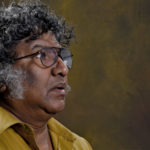Seed-Bombing for Regeneration
Re-foresting War-Torn Forestlands
In conversation with conservationist and academic A.M.Riaz on his mission to reforest postwar Sri Lanka
A.M.Riaz Ahmed, Senior Lecturer in Zoology, Department of Applied Sciences, South-Eastern University has been busy planting seedlings for the regeneration of plants and forests in war torn areas of Sri Lanka, in addition to his interests in botany and literature. He writes literary works under the pseudonym ‘Amrita AM’. His interest in conservation has enabled him to author 15 books on the topic, including 8 on environmental awareness. He has the seed-bomb method to regenerate forests and is creating awareness among younger generations on the importance of conservation for the future. Ahamed comes from Maruthamunai of Ampara district. He travels around the country with seed-bombs, selecting areas that need to be regenerated.
/
The Catamaran: What are seed-bombs?
In Sri Lanka, forests are destroyed due to population growth and consumption. The destruction of fauna and flora increase based on production and development. Trees and forests should be protected. Growing trees can be beneficial not only to human beings but to all organisms. We need to preserve the diversity of life. Forests need to be regenerated for this purpose. In mountains, shrubs and rivers we can grow trees, which leaves land areas for human expansion. Even maintenance is not required in such areas.
One of the fastest, easiest and cheapest methods for regenerating forests is this ‘seedling’ or ‘sowing’. It is a simple method that many countries around the world use today and was practiced in Egypt 3,000 years ago and again in Japan after World War II. It is still practiced in India to this day.
Seed balls are made with three parts clay and one part of dung. We place the seeds of the tree inside the mixture and throw it into the area where the forest regeneration is needed. This is what we call seed-bombing or seed-ball throwing.
(For more information, visit: http://www.amrithaam.com/2018/08/blog-post.html)
The Catamaran: Can seed bombs be used as soon as it is made?
No. We first dry the bombs in the shade for a day and then in the sun. It is only after this that we scatter the bombs. When it rains and the clay dissolves, the seed inside begins to grow. We can preserve the dried seed-bombs for at least a year with the seeds intact.
The Catamaran: What made you think of regenerating the forest in this manner?
I am a lover of nature from my childhood. I was sad to see the destruction of trees during the war that continued for about 30 years. I spent days and nights thinking about what I could do to regenerate the decaying trees. I searched the internet and used other means of research to find ways to do this. Seedling-ball throwing is the only method that has been found to produce trees and forests very quickly and without any cost!
The Catamaran: How has your project garnered the interest of others?
I recently delivered a speech at the Base Hospital in Tirukkovil on the topic ‘Forests and climate change, and the role of the medical sector in addressing it. In the ensuing discussion, military and medical personnel in the area encouraged pledged their support in every way to assist in the reforestation of the area. Colonel Sudath Dissanayake is also a lover of forests and his soldiers carry out this task effectively. The Kalmunai Ashraff Memorial Hospital is directly involved in forest regeneration. They also held a ‘seedling festival’. Rev. Siptagupta Theerananda Vanavasi Nayaka Thera has discussed reforestation as well. These give me confidence.
The Catamaran: What are the seeds that you used mainly for seedballs?
Many indigenous trees are extinct. Such as Tamarind, Neem, Teak, Blue berry, Fig etc. The list is very long. So, we use the seeds of mostly these indigenous trees.
The Catamaran: What is the interest of the youth in this field?
When I went to Omanthai, Vavuniya the youth of the areas showed great interest and were enthusiastic. They did not care about the heavy downpour and enthusiastically engaged in these activities. In the Kudaththanai area, the youth split up into groups and made seed bombs. They also attended a seminar and training on the subject. Through this, I was able to understand their mentality regarding preserving nature. They are eager to take pictures and send it to me when the sprout comes up a few days later.
The Catamaran: What do you expect from the involvement of the youth in this seedling initiative?
From university students to schoolchildren, there is great interest in seedball activities. I see this as a very important educational system for students. It is well received in the universities. This should be taken to schools also. The way I show them today is that they will move on without me tomorrow. I expect them to do this work for the future.
